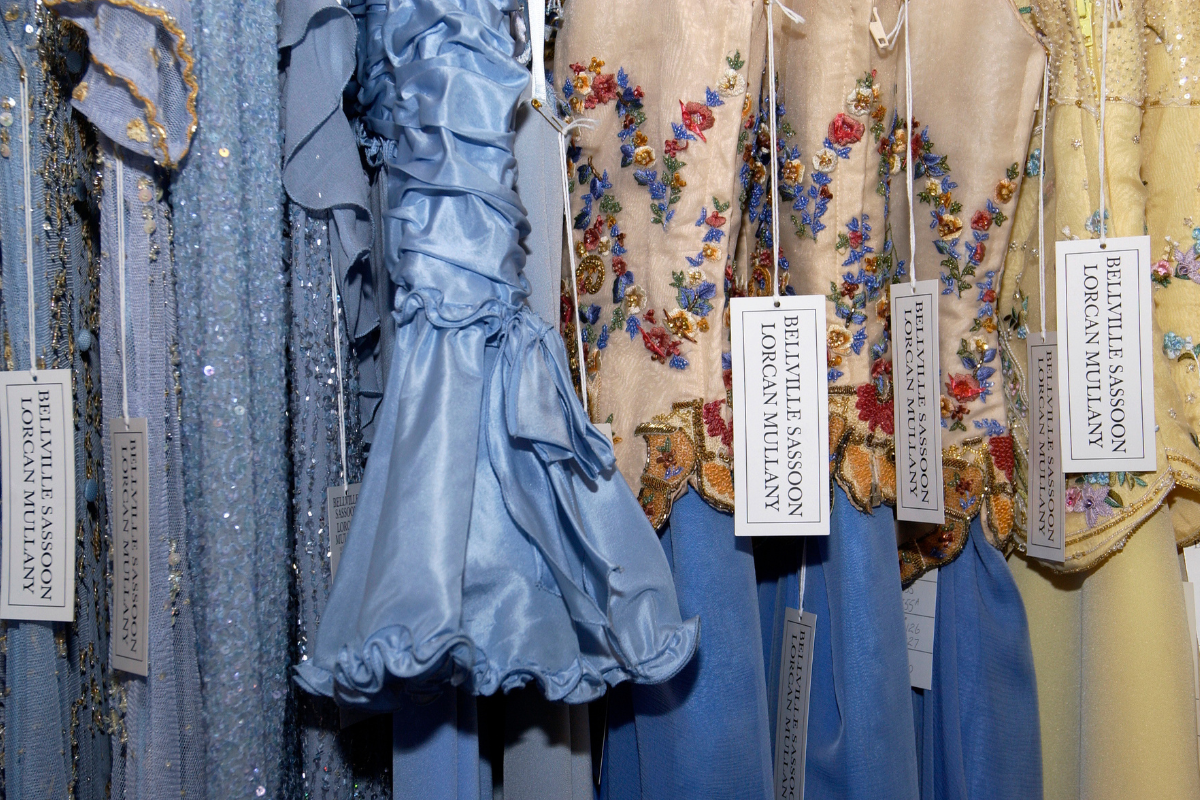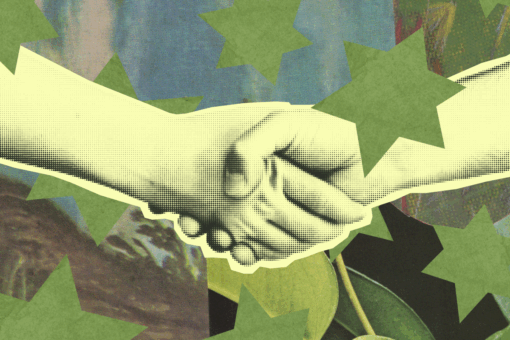My favorite part of the “Fashion City” exhibition at the Museum of London Docklands – other than the stage-your-own-wedding-photo room – was the ode to David Sassoon and his professional relationship with Princess Diana. The room came alive with colorful gowns, beautiful sketches and handwritten notes between the two. While other aspects of the exhibition were less enjoyable and enticing, it is undeniably paying due homage to Jewish designers who helped to establish London as a fashion capital of the world.
The exhibition begins in the “East End,” setting the scene with descriptions of the two large waves of Jewish immigration to London: first between 1880-1914 and next as a result of World War II. My grandma’s family moved to the UK in the first wave, and my grandpa’s came in the second wave. They moved to Manchester, not London, but I still felt a real sense of connection and personal pride immediately. Seeing history that you feel yourself to be a part of is a very special feeling, and I think anyone with personal ties to the subject of this exhibition will really enjoy it.
For me, the East End section of the exhibition re-trod some well-stomped ground. The resources are always interesting — the trunks in which people stuffed their lives in order to flee, the travel documents translated across countries and cultures, the grainy photographs of beaming Jewish refugees opening their first shop fronts after settling in a new place — and I marvel at the record-keeping which facilitates such detailed storytelling. However, it felt like it took some time to get going, and I felt conscious of having seen a lot of similar material at other Jewish museums I’ve visited. The stories of immigration, assimilation and survival become slightly homogenized — and I felt myself and my fellow museum goers becoming somewhat desensitized — by the onslaught of information.
That said, it is worth considering the demographic which will be coming to this exhibition. I am drawn to it not only by interest but by personal connection, but Museum of London Docklands has a wide outreach and offers exhibitions that are focused on a vast variety of London-focused topics. Seeing your cultural history exhibited can have a specific appeal, but it can be assumed that many of the people who will see this exhibition won’t have been exposed to the amount of Jewish history that I have.
This begs a question that always comes up for me with content like this: Who is this for? The true answer is that it has to be for everyone, in that it has to be accessible to as broad an audience as possible in order to be commercially viable. But sometimes, the outlining of Jewish history can feel distinctly aimed at the education of a non-Jewish audience, and whilst this is a deeply necessary endeavour, it can be pretty alienating and othering to experience something that feels like it is about but not for you.
The second half of the exhibition is where I felt it found its niche and its creative groove more effectively. You take the “central line” to the West End on a simulated tube ride that takes you from Mile End to Oxford Street (a bit kitschy, but very London), and the East End gives way to glitz and glamour. While I felt that some of the presentation in the first half of the exhibition played into the stereotype of stories about Jewish people being fundamentally bleak and sad, the second half was celebratory. The grayness of the first half of the exhibition is truly behind you. The space bursts into color and vibrancy. David Sassoon gowns line the walls, and I was especially excited to see letters and annotated sketches shared between the designer and Princess Diana, who wore many of his creations and with whom I would consider myself to have a parasocial relationship.
In another moment of personal connection, I spotted part of the exhibition that highlights the contribution of Marks and Spencers’, who now say that 1 in 3 British women buy their bras from them. As family lore goes, my great great great (great?) grandfather, travelling by boat to Britain from Lithuania, was approached by a Mr. Marks, who suggested they go into business together. Penniless, my relative turned him down, and Mr. Marks went on to find a Mr. Spencer. Marks and Gadian maybe doesn’t have quite the same ring, but who doesn’t want that lingerie-based fortune? In any case, this felt quite special to me: a family anecdote brought to life in a mainstream exhibition. But it also emphasized the importance of personal (if tangential) connection, and I worried that for those who don’t have such strong ties to the content, nothing would stand out in the same way, and the mass of material would blur together.
In the West End section, the whole concept of Jewish designers and Jewish contribution to fashion changed. Originally we see Jewish immigrants using their craft as a means of survival and assimilation, and providing a service that relied on their ability to anglicize their skills and ultimately granted them some kind of social currency as a result. As we modernize and move that little bit West, Jewish designers are defined not by their Jewishness but by their designs. This is somewhere that I felt the museum didn’t quite hit the nail on the head. While the exhibition did have a sense of transition, it felt like it didn’t really understand the incredible significance of the change it was presenting: that through time and dedication, Jewish designers have seamlessly (ha) become part of the very fabric (ha again) of London fashion. The significance of that transition could maybe be emphasized further by the exhibition.
Ultimately, this is a pretty special exhibition. The sheer volume of material is incredibly impressive, and the educational capacity of a collection like this at a mainstream museum must not be underestimated. In the second half, the content comes alive in an extra special way, and allows the Jewish history presented to be full of the joy that we have carried with us across the world and sprinkled all over London.
“Fashion City” is on at the Museum of London Docklands through April 14.



